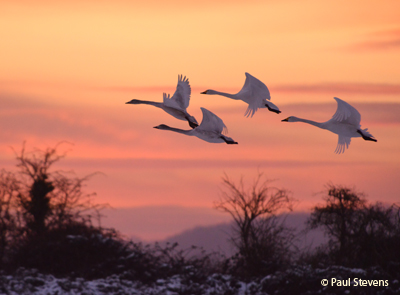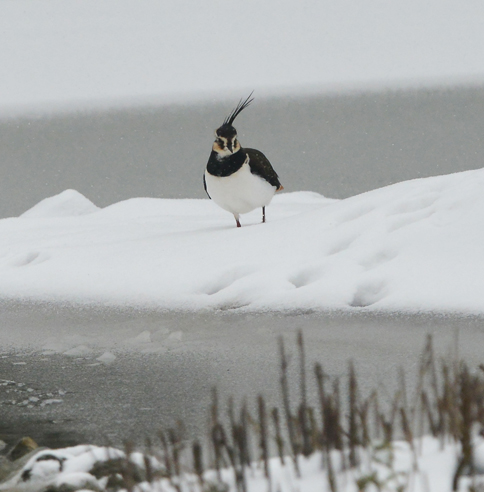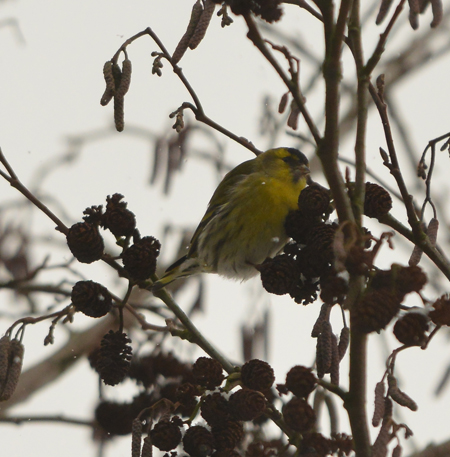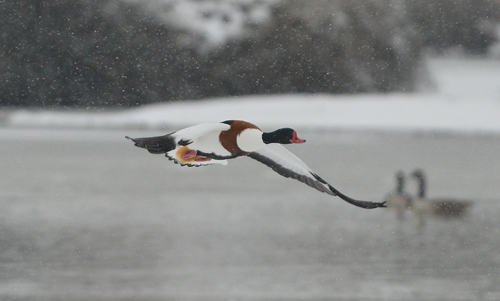Snow makes birds bolder in hunt for food
Notes and photos from a Jan 20 2013
The water near the Ramsar and Sand Martin hides is frozen over - just small areas of water remain open in the centre. Birds crowd the water here making counting difficult.
Today I arrived early to see the 27 Bewick’s Swan that roosted overnight on the reserve. I watch half of the Bewick’s clamber along the ice before taking to the air against a pink sunrise. There was not enough space on the crowded water for their usual take-off run.

Two lapwing sit in the snow on the grassland. A greater black-backed gull sits among a bunch of common gulls on the long island. I count twenty-five shelduck; this number has been consistent for the past few weeks. This group of wild shelduck have been visiting our birds in the Tundra exhibit when staff do the evening feed to get an easy dinner.

The wigeon that have been near the Ramsar hide have joined our captive wigeon in our Diversity exhibit. The water doesn’t freeze over here because of the constant movement of the ducks.
I only spot 3 teal and 1 snipe today. Both these species have moved onto our small ditches where the moving water keeps muddy edge soft enough for them to feed.
We have had more sightings of fieldfare and redwings on the reserve. Thousands have been moving down from the north. Winter berry stocks have gone and the snow is covering the fields where they scavenge seeds. Bullfinches showing well emboldened in their search for food. Flocks of siskin have been seen from the boats in Wetlands discovery hanging on alder trees prying seed from the small cones. Some members of our grounds team flushed two woodcock while they walked the perimeter fence yesterday. They too are being pushed into areas they wouldn’t normally go, searching for soft ground to probe for worms.

Approaching the Sand Martin hide I see a goldfinch feeding on seed heads of teasel and motherwort in the wildlife garden. Where is the rest of his flock? Blue tits hop the hedges while the ground feeding dunnock searching the snow below, struggling to find food.
I spot three more lapwings from this hide. Lapwing also need muddy edges to feed but they avoid closed in ditches, preferring open areas where they can keep and eye out for predators.
The water at the Scrape hide is totally frozen over. The side ponds at Reedbed hide are frozen over but the channels in front are open. Most of the water in the channels along the Reedbed boardwalk are open. A reed bunting skims the top of phragmites seed heads but snow has flattened many of these reeds. The stillness makes me think about the life lying dormant here. Insects hibernate inside stalks, waiting to awake in spring.

